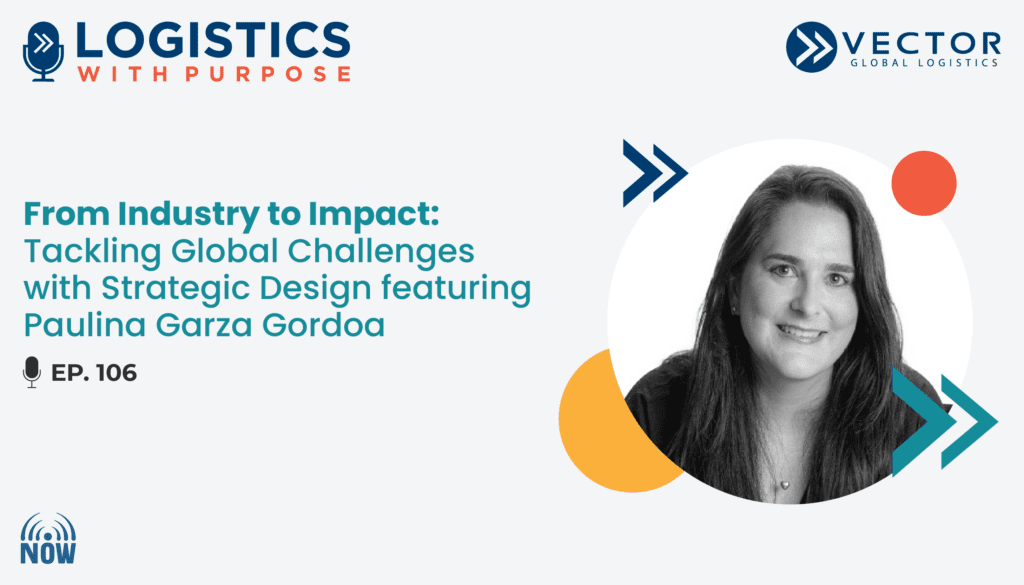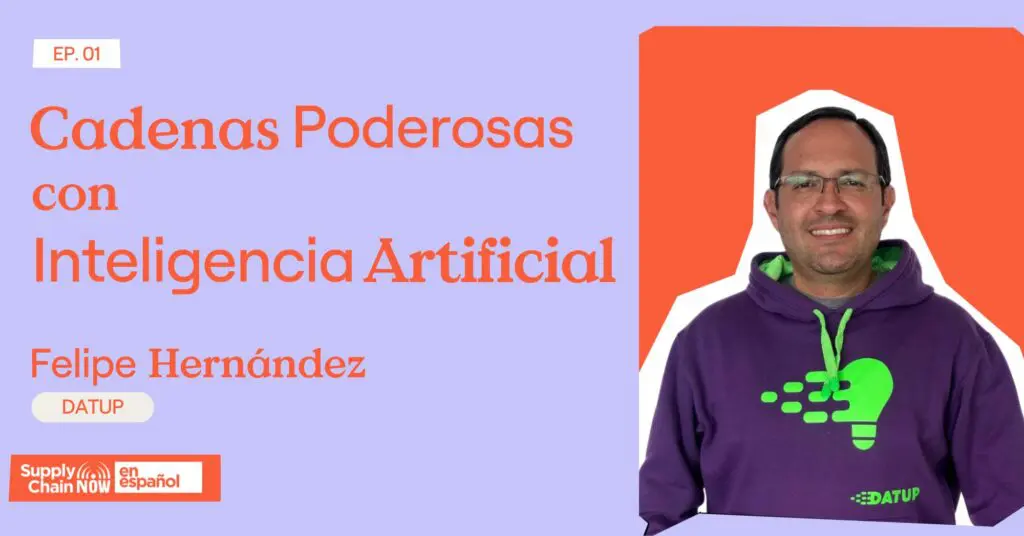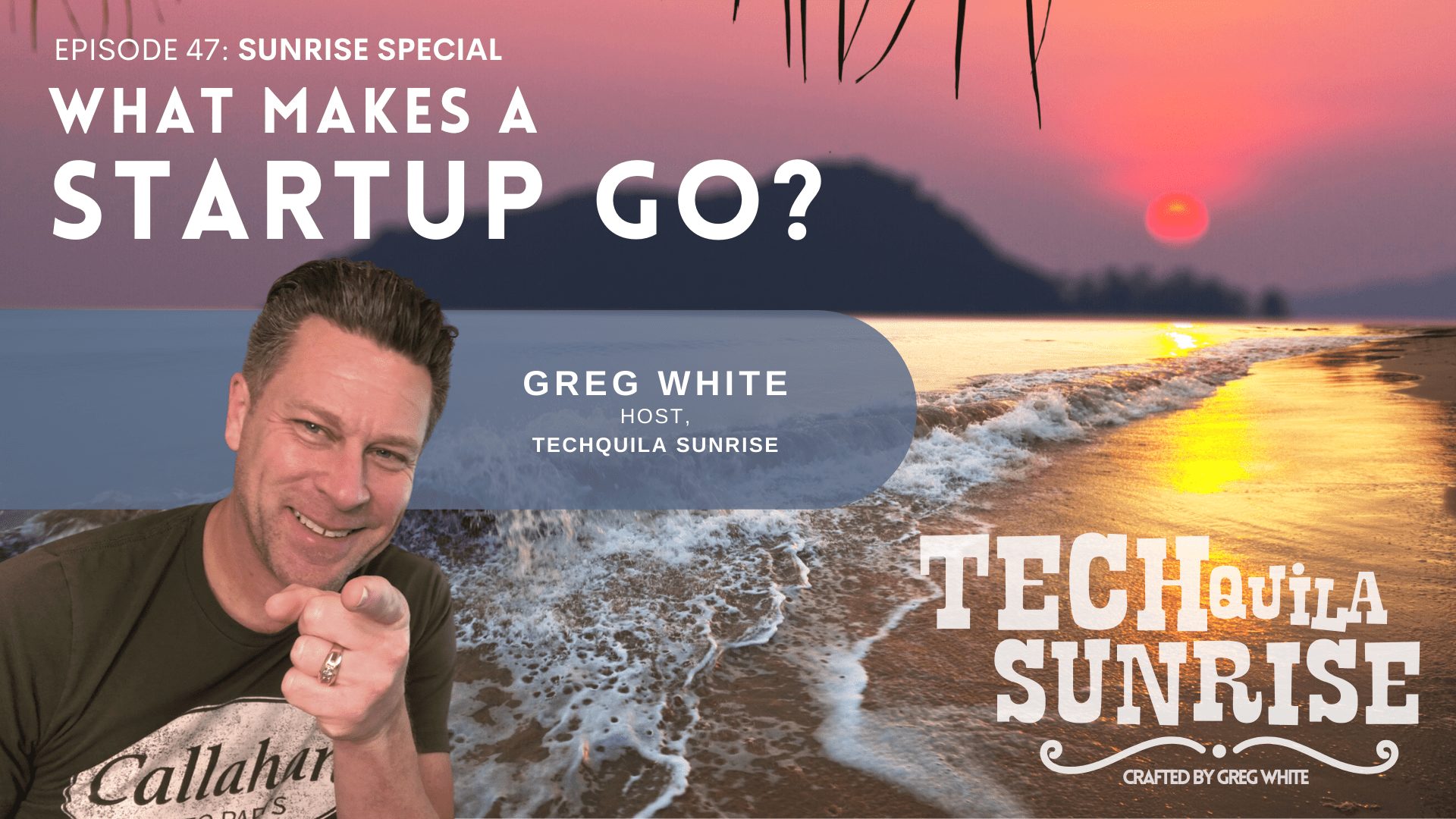Greg White (00:04):
It’s time to wake up to tequila. Sunrise. I am Greg white, your supply chain tech advisor, with more insights into what you need to know to succeed in supply chain, tech, startup growth, investment and transformation. So let’s tip a glass to another enlightening tequila
Greg White (00:35):
This time around some startup early stage and investing education. We’ll dive deep into what happens in each round of a startup. What founders should be getting done, what to expect and what a company ought to be worth. Let me share some of my startup rules to help you understand being a founder or working with founders. So I don’t remember who said this. Many people have probably said it, but this is something I’ve come to believe. As I’ve been a founder, advised founders, been on boards of directors. Passion is not sufficient. Obsession is required in a startup. So let me explain that. You can do things you’re passionate about. You might be passionate about surfing or mountain biking. I am, but to make it into a business that you’re going to spend a lot of your time in and sacrifice things for obsession is absolutely required.
Greg White (01:35):
You need the kind of energy that obsession forces you to apply to a task in order to be committed enough, to take a startup from beginning to end. Another couple things that I think are just critical and a tech startup must start with a technologically gifted founder. Someone who can do the code, someone who can understand architecture and those sorts of things, and a vision sales operations, and investor savvy founder. You need both sides of that coin. And rarely is that found in a single person. And frankly, even if it is that’s way too much work for one person leadership of marketing, finance, and other specialty roles can be handled fractionally as necessary. So maybe you want more founders, but at the very least, it requires to don’t go it alone. All right. Having established the basics. And if you’re still interested in learning more attempting your own startup, I put together a startup matrix to help describe the various stages of a startup from bootstrapping to growth equity.
Greg White (02:44):
I’ll go through this pretty quickly to give you some insight. The caveat here is that there are a lot of differing opinions on approach and a lot of details that could prompt discussion, not going to go into excruciating. And I want you to understand this is not gospel. It’s my findings combined with some other people. And it’s meant to be a fundamental baseline to start your education or research. So some quick learnings, it’s important to understand that the timeframe of the stages I’m going to describe will vary and sometimes vary widely, mostly based on the growth rate and or the burn rate or the amount of cash you burn by spending more than comes into the business each month of the business for sanity sake. Do you want any investment to add to last 18 months to three years as fundraising is unbelievably strenuous and distracting to founders and key execs, especially in early stages, time spent on obtaining funding for the business is not spent advancing the sales, marketing, product development and operations of the business.
Greg White (04:01):
So you want to limit the amount of time that you need to do that. You’ll fund frequently in a tech startup, but you want to do so prudently so that you can get back to the business of building the business. All right, let’s get to it. If you miss anything rewind or hit me up on LinkedIn, Greg wide at supply chain now, and I’ll send you the matrix in a spreadsheet form free to modify or review or adapt based on your experience and findings or whatever you might want to use it for. So I’m going to go through the stages of funding that we discussed. In episode three, we talked about seed stage bootstrapping a rounds, all of those types of funding stages. So I’m going to go into, uh, where the company is in terms of maturity, the investment stage itself, any key milestones, what the fundraise amount would be in that stage, who invests in that stage, what your revenue and valuation could be in that stage.
Greg White (05:11):
So buckle up kid. So if you think about the company at its vision concept, pre-product stage, that’s typically called pre-seed or bootstrap stage the milestones being first to build that founding team that we talked about before. So that team of at least two folks, and then in that stage, you will likely be somewhere in the neighborhood of as little as maybe $20,000 or up to $500,000 in fundraising to cover startup expenses, infrastructure, research, those sorts of things that you need to know to understand whether you have a good product, whether you have a good market, frankly, first, and then how to adapt a product to that marketplace, the type of investor is going to be you, Y O U your personal funds or friends and family, or both. I would put my personal funds in before I went to my father-in-law, by the way, maybe angels, uh, your revenue level is going to be completely zero.
Greg White (06:19):
And your valuation is going to be anywhere from zero to maybe $2.5 million. If you take external angel money, your valuation will matter. If you don’t take external money, it’s likely not as important. So the next stage then would be taken that company from the pre-product stage, the vision stage to somewhere prior to market fit. So you’re still researching you’re in that seed stage. You’re still trying to build now a, a product, but maybe a minimum viable product MVP. And you may even approach or have some friendly customers that are going to help you get off the ground. If you have a ready-made market for this, that’s the ideal situation. So your fundraise amount is going to be in the neighborhood of somewhere under $2 million for the purpose of funding, research and development, proof of concept, uh, team expansion. Note that in these first two fundraises, I haven’t said anything about salaries.
Greg White (07:30):
You can expect to get paid. Absolutely nothing for somewhere in the neighborhood of 18 to 36 months. It could be less, it could be longer, but it just depends on how much time it takes to discover market fit, or at least the initial market fit, and to develop a product, to take it to market, and then to start getting paid by customers often at these early stages, you will give the customer what is essentially a free trial to be the first customer of the, of the company, the kind of investor that gets involved in this stage. Uh, also angels occasionally, um, micro funds or seed funds. So micro are simply smaller seed funds and seed funds typically will invest anywhere from 200 to $500,000 at a time your revenue is going to be less than a million dollars, probably still near zero for at least a portion of the 18 months or so that you will be running through this investment stage.
Greg White (08:42):
And your valuation is going to be in the neighborhood of two, between two and $10 million. Let me reinforce that these are vague numbers and they may vary based on the precise industry that you’re in, even the precise type of technology that you’re building. And also even the part of the country that you’re in valuations are much higher or have been historically much higher in the valley in Boston, in San Diego than they are in say, Austin or Atlanta or Chicago. So that can vary pretty dramatically. And again, it also can vary dependent on the investors that you bring in at any particular stage as well. So your next stage is going to be some level of seed. You might have one or two actual seed rounds of investment. Think of this as early commercial adoption of the product. So you’ve built an MVP. You may be, have even matured the product, slightly matured, your implementation processes early adopting commercial customers are coming in at this stage.
Greg White (09:53):
You’re going to raise somewhere in the neighborhood of between two and $5 million and the type of investors. Again, going to be a seed fund. It could be a small venture capital firm, and sometimes firms will call themselves a seed fund when they’re actually a small VC or vice versa. So don’t get too hung up on the names, but these are the areas of focus that these funds will be involved in. Your revenue is going to be south of three, 3 million ARR did I say ARR before annually recurring revenue and, and that’s a key annually. Recurring revenue is a key to your valuation. That way you don’t have to start over every year at zero revenue and keep going. So that’s why you see these big valuations of companies in the marketplace is because once they’ve signed you up to a subscription, I’m sure everyone knows what a subscription is by now.
Greg White (10:52):
Once they’ve signed you up to a subscription that subscription just continually renews, and there’s not a lot of costs, there’s a lot of dependability of that, uh, revenue and the company then creates a lot more value for investors. So at this early commercial adoption stage, your valuation is going to be in the neighborhood of eight to 25 million. And then the next stage is we’re starting to get to series a, it’s hard to believe. It seems like we’ve been talking about this forever, but we’re starting to get to series a. So you’ve established a product market fit you’re in that series a where a full fledged venture capital fund we’ll invest in you. It could be series B or C. You know, we talked about that in the last episode, there are in, there is an incredible alphabet soup of series of venture capital that you can acquire, but let’s just say it’s ABC.
Greg White (11:49):
Something like that, probably a or multiple B rounds is how it, it typically tends to run. You’ve established product market fit. You’re maturing your sales, your marketing, your implementation organizations and models you’re approaching. And this is an important milestone you’re approaching or at cashflow neutral. So to date, you have been burning cash. That description I gave you before, meaning much more cash going out the door than coming in the door. And so that’s why you will have multiple rounds of investment. People will see the potential in the business, but recognize that it is expensive to build technology. And they know that they’re going to have to continue to put capital into it the sooner, you know, how much capital that is. And the more of those milestones of fundraising you’re aware of the better that gives confidence to investors. It gives confidence to you and your team to know, Hey, we just raised $3 million.
Greg White (12:54):
That’s going to last us 18 months in another six months, we need to start another fundraising exercise. So those will be venture capital firms. You’ll probably be looking at an investment in the neighborhood of five to $10 million. Plus your revenue should be in the five to say 25 million annually recurring revenue range. And your valuation will be in an a or a B round anywhere. And this is a broad, broad range anywhere from 25 million to a hundred million plus in valuation, and could be much, much higher, depending again, on your revenue growth and the size of the market that you’re approaching. So the next stage is market acceleration, expansion acquisitions. You’ve got a fairly mature company. This is called the growth equity stage. This stage is a good milestone for founders and you know, may come in two years and make them in five years. It may take 10 years or more, but these are typically growth equity series B to, I don’t know, X let’s say you’ve established market fit.
Greg White (14:03):
You’re extending your penetration into that market. There are potentially new markets for you to go to or product extensions in your market or, or even additional companies that you might want to acquire or merge with to add your add to your tool set you’re at zero burn, definitely at zero burn rate. So you are bringing in more cash than you are spending. You may even be approaching or at profitable. So think about how far down the road we are. And we’re now just finally starting to talk about profitability. So your fundraise amount, this is a big range, anywhere from 10 million to over a billion dollars, usually used for growth acquisition. And finally, finally, what’s called founder liquidity, which is where the founders actually get to take some chips off the table. So let’s say an investor gives you 25, 10 of that may go to you.
Greg White (15:06):
And 15 goes to the balance sheet, meaning it goes to cash in the company too, extend operations. So you get to pay off all your debts. You might get to buy a new car, whatever, but you are still engaged as a manager of the company. If you’ve done all these funding rounds, right? And I’ll, I’ll talk, talk about what that means here in just a second. So these investors are typically called growth equity funds. They’re big. You may have even heard of them, even if you’re not familiar with investment, your revenue is going to be in the range of 10 million to a hundred million plus. And your valuation could be anywhere from 50 million should be. If you’re getting growth equity, we’re in the 50 million to 1 billion plus range. If you are a unicorn, you are definitely going to get to take some time chips off the table, but you’re still gonna have a lot of growth potential in the company.
Greg White (15:59):
And you will have two things, both leverage by way of the funding and the maturity by way of accompany and hopefully management team to be able to bring this forward. So I’m not going to go into how investors evaluate founders and companies just yet, but that gives you an idea of how the funding rounds work. And it’s sometimes a shock to people, people to realize that they’re going to give away a portion, sell frankly, a portion of their company each time, this occurs, and they’re not going to put any money in their pocket. They’re going to put it all back into the business until you get to that growth round. So an important thing to think about as you are selling your company is each time you do any of these rounds, you want to try to keep the Vester base, the new investors at around 20% of the equity.
Greg White (16:52):
So to give you an example, in the last episode, we talked about a company worth a million dollars that took a million dollars worth of investment. You wouldn’t want to do that. You would be 50 50 partners with your investors. It’s way too early to do that. You want to try to keep them at about a 20% equity stake. So let’s say you’re in your seed round and you’re worth $10 million. You need investment. That investment should be in the neighborhood of two to $3 million that would put your investors in that 20% ish range post money. Remember we talked in the last episode about pre money valuation, $10 million. If you take $3 million on a $10 million pre money valuation, as soon as you get that check, you’re worth $13 million. So they would own three thirteenths of the company. So anyway, you can do the math probably better than I can, but understand that you want to try to keep each round in that 20 to 30% so that you maintain control of the company for as long as you possibly can. That’s the way to make sure that your dream gets seen through
Greg White (18:04):
How can I help you improve your shot at supply chain tech success, four ways, one subscribed to tequila, sunrise, wherever you get your podcast to make sure you’re notified of my new episode every week to follow me on LinkedIn and see my supply chain summaries every week, day three, if you’re a startup founder or growth stage leader, and you need an active advisor to propel you through your supply chain tech journey, I’m currently considering select strategic advisory roles or four. If you need an incubator or investment for your supply chain tech, reach out to me on LinkedIn and let’s talk.



